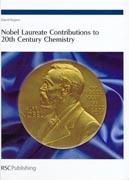Alan Dronsfield reviews this contribution to the history of chemistry
Nobel laureate contributions to 20th century chemistry
David Rogers
Cambridge: RSC 2006 | Pp668 | £99.95 | ISBN 0 854 04356 X

Nobel prizes in chemistry have been awarded since 1901, so it is highly appropriate that David Rogers should produce potted biographies of all the recipients during the past century.
Each winner gets about four pages of text, irrespective of how history has dealt with the laureate's contribution to chemistry. Page-wise, Theodore William Richards (1914, for the 'accurate determinations of the atomic weight of a large number of elements') is equal to Robert Burns Woodward (1965, for 'outstanding achievements in the art of organic synthesis') and Dorothy Crowfoot Hodgkin (1966, for 'her determinations by X-ray techniques of the structures of important biochemical substances').
Each of the entries follows the same pattern. Part of the Nobel citation is bracketed with a few personal details, eg date of marriage, number, sex and names of offspring and sometimes even the careers they followed. Then there is a short paragraph on the early years of the recipient - colleges attended and influences that made the laureate choose chemistry for lifelong study. The 'Career' section presents a tabulated chronology of the various posts the laureates occupied and summaries, mainly taken from the award-winners' acceptance speeches, of their major activities that earned them their prizes. A section listing awards and honours follows and finally a short bibliography for those who want to seek further information.
For me, the most fascinating part of the book was not the biographical details of the winners themselves, but a one-and-half-page summary at the back of those chemists who had been nominated for a Nobel prize, but failed to get one. Individuals whom today we recognise as advancing our subject immeasurably were judged not to have cut the mustard. Gilbert Lewis who developed the electronic notion of the chemical bond was nominated 17 times in the period 1922-46; and Henri Le Chatelier, of principle fame, put forward 16 times between 1905-34.
If the book proceeds to a second edition, opportunity should be taken to correct the spelling of Fritz Haber's name in his section and elsewhere, and to improve the quality of the structural formulae.
Priced at £99.95, this book is expensive and I wonder who will buy it. At this price it is unlikely to find a place in school or college libraries, and I doubt if many universities will see it as good value for money. This is a pity, because this is a useful contribution to the history of chemistry and as such, it deserves a wide readership.






No comments yet